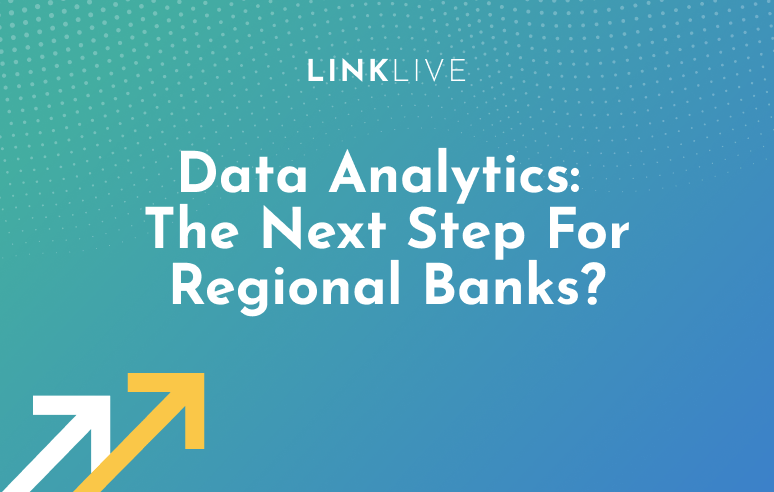Data Analytics: The Next Step for Regional Banks?

Data analytics is a key component of many organizations’ strategy to improving customer service and internal processes and making decisions based on facts rather than instinct. When I say “many organizations,” I mean over half — 53 percent to be exact, according to Forbes.
So what is data analytics? Tech Target defines it as, “the process of examining data sets in order to draw conclusions about the information they contain, increasingly with the aid of specialized systems and software.”
Over the past few years in particular, we’ve seen a steep increase in data analytics adoption for the development of new offerings and the reduction in organizational expenses. One industry in particular, however, has untapped potential in terms of data analytics — regional banks.
So what exactly can smaller regional banking institutions be doing to realize the incredible benefits of data analytics? Follow along as we explore the specifics.
Fraud Prevention
It’s no secret that people are concerned about their accounts and the threat of hackers. This leads to a paranoia that causes obsessive checking of account and transaction details. And this is for good reason. According to a March Networks survey, 60 percent of Americans have noticed fraudulent transactions in their bank accounts. This news can cause banks to quickly lose the trust of their customers who would like to believe that their branch is there to serve and protect them.
Previously, regional banks manually pored over purchase and spending records in an attempt to hone in on transactions that deviated from a customer’s typical pattern. With technology, however, banks can save time and money by analyzing and detecting instances of potential fraud via data analytics for branch employees to follow up on.
Personalized Bank Offerings
Especially for regional banks that offer omni-channel customer communications, there is so much data available that offers insights into how an individual prefers to communicate, what services they are and aren’t taking advantage of, what offerings they’ve looked into previously but failed to follow through on, etc.
Read More: Banking and the Human Experience →
In the past this was done largely on a manual basis with a fair amount of guessing. Branch employees would review all the information they were able to gather on a customer, and then make an upgrade recommendation during their next interaction. While this may have sometimes been effective, data analytics can greatly increase the success rate by predicting exactly how given customers are interested in growing their banking portfolios.
Strengthened Member-Bank Relationships
In my opinion, every banking institution should constantly be striving to strengthen its member-bank relationships. The more connected customers feel to the institution themselves, the more loyal they’ll be to the organization long-term. Through data analytics, banks can discover the demographics and preferences of their customers. Once those factors have been determined, they can be used to create loyalty programs that people are actually interested in.
Other industries are already aware that in order for loyalty programs to be effective, some changes need to be made. Take the retail space for instance, 60 percent of companies listed upgrading loyalty programs as a top priority according to Strategy Wise.
Regional banks can learn from and modify efforts being taken by larger banking institutions. An example of this sort of implementation is Chase’s Sapphire Preferred, which is tailored to individuals on-the-go, offering double rewards points on all travel and dining expenses. By analyzing their customers, banks can identify what matters to them most and determine the types of programs that will actually spark engagement.
